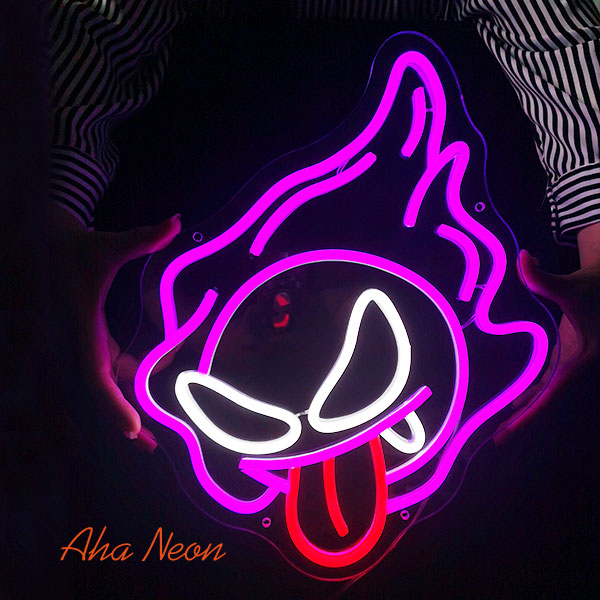In the realm of contemporary signage, LED neon signs have emerged as prominent fixtures, captivating audiences with their vibrant colors and striking designs. However, behind their luminous display lies a complex interplay of technology and engineering. In this comprehensive analysis, we delve into the intricacies of LED neon signs, unraveling the mechanisms that power their brilliance.
Understanding the Basics:
At the core of LED neon signs lies a series of light-emitting diodes (LEDs) encapsulated within flexible silicone or acrylic tubing. These LEDs serve as the fundamental building blocks of the sign, generating light through a process known as electroluminescence. Unlike traditional glass neon signs that rely on heated gases to produce illumination, LED neon signs harness the movement of electrons within semiconductor materials to emit photons of light.
The Role of Semiconductor Materials:
Semiconductor materials, such as gallium nitride (GaN) or indium gallium nitride (InGaN), form the foundation of LED technology. When an electric current is applied to these materials, the movement of electrons across the semiconductor junction results in the release of energy in the form of light. This phenomenon allows LED neon signs to achieve their radiant glow with remarkable efficiency and precision.
Enhancing Color Diversity:
While LEDs inherently emit light in a single color determined by the semiconductor material, LED neon signs offer a diverse spectrum of hues through the integration of phosphor coatings. These coatings interact with the emitted light, converting it into a broader range of colors. By strategically adjusting the composition and thickness of phosphor layers, manufacturers can achieve an extensive palette of vibrant colors, catering to a wide array of aesthetic preferences.

Craftsmanship and Customization:
The creation of LED neon signs is a testament to precision craftsmanship and artistic ingenuity. Skilled artisans meticulously shape the flexible tubing into intricate designs, logos, and lettering, bringing each sign to life with meticulous attention to detail. Whether adorning commercial storefronts, architectural landmarks, or interior spaces, LED neon signs serve as captivating expressions of creativity and branding.
Practical Advantages:
In addition to their aesthetic appeal, LED neon signs offer a host of practical advantages over traditional signage options. They consume significantly less power, exhibit greater durability and longevity, and emit minimal heat, making them ideal for both indoor and outdoor applications. Furthermore, LED neon signs require minimal maintenance, reducing operational costs and enhancing overall efficiency.
Conclusion:
As we conclude our exploration of LED neon signs, it becomes evident that their operational mechanics are a testament to the marriage of cutting-edge technology and timeless craftsmanship. From their efficient use of semiconductor materials to their vibrant color diversity and customizable designs, LED neon signs continue to redefine the landscape of modern signage. As technology advances and creative possibilities expand, LED neon signs will undoubtedly remain at the forefront of visual expression, captivating audiences with their luminous allure for years to come.







Leave a comment
This site is protected by reCAPTCHA and the Google Privacy Policy and Terms of Service apply.